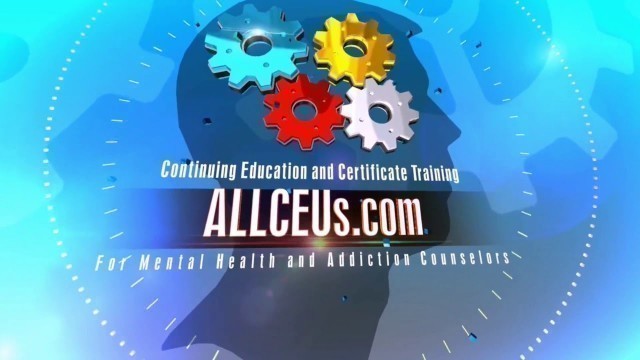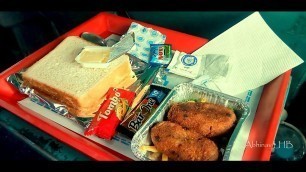

'Unlimited Counseling CEUs for $59 https://www.allceus.com/ Specialty Certificate tracks starting at $89 https://www.allceus.com/certificate-tracks/ Live Webinars $5/hour https://www.allceus.com/live-interactive-webinars/ Patreon: https://www.patreon.com/CounselorToolbox Help us keep the videos free for everyone to learn by becoming a patron. Pinterest: drsnipes Nurses, addiction and mental health counselors, social workers and marriage and family therapists can earn continuing education credits (CEs) for this and other course at: https://www.allceus.com/member/cart/index/product/id/496/c/ View the New Harbinger Catalog and get your 25% discount on their products by entering coupon code: 1168SNIPES at check out AllCEUs is also approved as an education provider for NAADAC, the States of Florida and Texas Boards of Social Work and Mental Health/Professional Counseling, the California Consortium for Addiction Professionals and Professions. Our courses are accepted in most states through those approvals. The socioecological model of addiction is one of many theories. Objectives Define the socio-ecological model Apply the socioecological model to addiction Explore different variables in the socio-ecological model Discuss how this framework can be used in prevention and treatment of Co-Occurring Disorders Socio-Ecological Model This model explores and explains human behavior as the interaction between the individual and 5 environmental systems The Microsystem The Mesosystem The Exosystem The Macrosystem The Chronosystem Exploring the Model Microsystem: Institutions and groups that most directly impact the person including: personal biology, family, school, church, peers, neighborhood. Mesosystem: Interconnections between microsystems Interactions between the family and teachers, Relationship between the child’s peers and the family Exploring the Model Exosystem: Involves links between a social setting in which the individual does not have an active role (spouse’s work) and the individual\'s immediate context (home environment). Macrosystem: Describes the culture (i.e. socioeconomic status, poverty, and ethnicity.) People, homes and individual work places are part of a large cultural context. Exploring the Model Chronosystem: Events and transitions over the life course, as well as sociohistorical (birth, divorce, marriage, moves) Individual Biological and personal history factors that increase the likelihood of addiction or mental health disorders Some of these factors are Pre-existing mental health issues Chronic Pain Low self-esteem Individual Biological and personal history factors that increase the likelihood of addiction or mental health disorders Some of these factors are age, education, income, substance use, or history of abuse. Individual Prevention strategies are designed to promote attitudes, beliefs, and behaviors that ultimately provide the person with healthy coping skills, an awareness of positive health behaviors and the ability to effectively communicate. Specific approaches may include education and life skills training. Relationship The second level examines close relationships that may increase the risk of experimenting with high-risk behaviors A person\'s closest social circle-peers, partners and family members-influences their behavior and contributes to their range of experience. Relationship Risk factors include Lack of family involvement A parent or sibling with mental health problems or an addiction Peer pressure Prevention Strategies at this level may include Parenting or family-focused prevention programs, Mentoring and peer programs Relationship Designed to Improve self-esteem Foster problem solving skills Promote healthy relationships. Community Identify the characteristics of settings, in which social relationships occur which are associated with developing addictive behaviors, such as: Schools Workplaces Neighborhoods Community Prevention strategies at this level are typically designed to impact the social and physical environment by: Reducing social isolation Improving economic and housing opportunities Improving the climate, processes, and policies within community, school and workplace settings. Summary Bio-Socioecological Model identifies how the individual impacts and is impacted by not only his own characteristics, but also those of family, peers, community and culture Prevention can take the form of Preventing the problem Preventing worsening of the problem Preventing associated fall out Summary Any change in the system will have an effect on all other parts of the system Addressing addictive behaviors requires a multipronged approach'
Tags: quantum units , ce4less , online ceus , unlimited ceus , co occurring LPC LPC CEUs LMHC LMHC CEUs Cheap ceus fast ceus , ce 4 less , ce for less , California Board for Behavioral Sciences , ACEP , Texas Board of Social Work , CEU approvals , homestudy ceus
See also:



comments